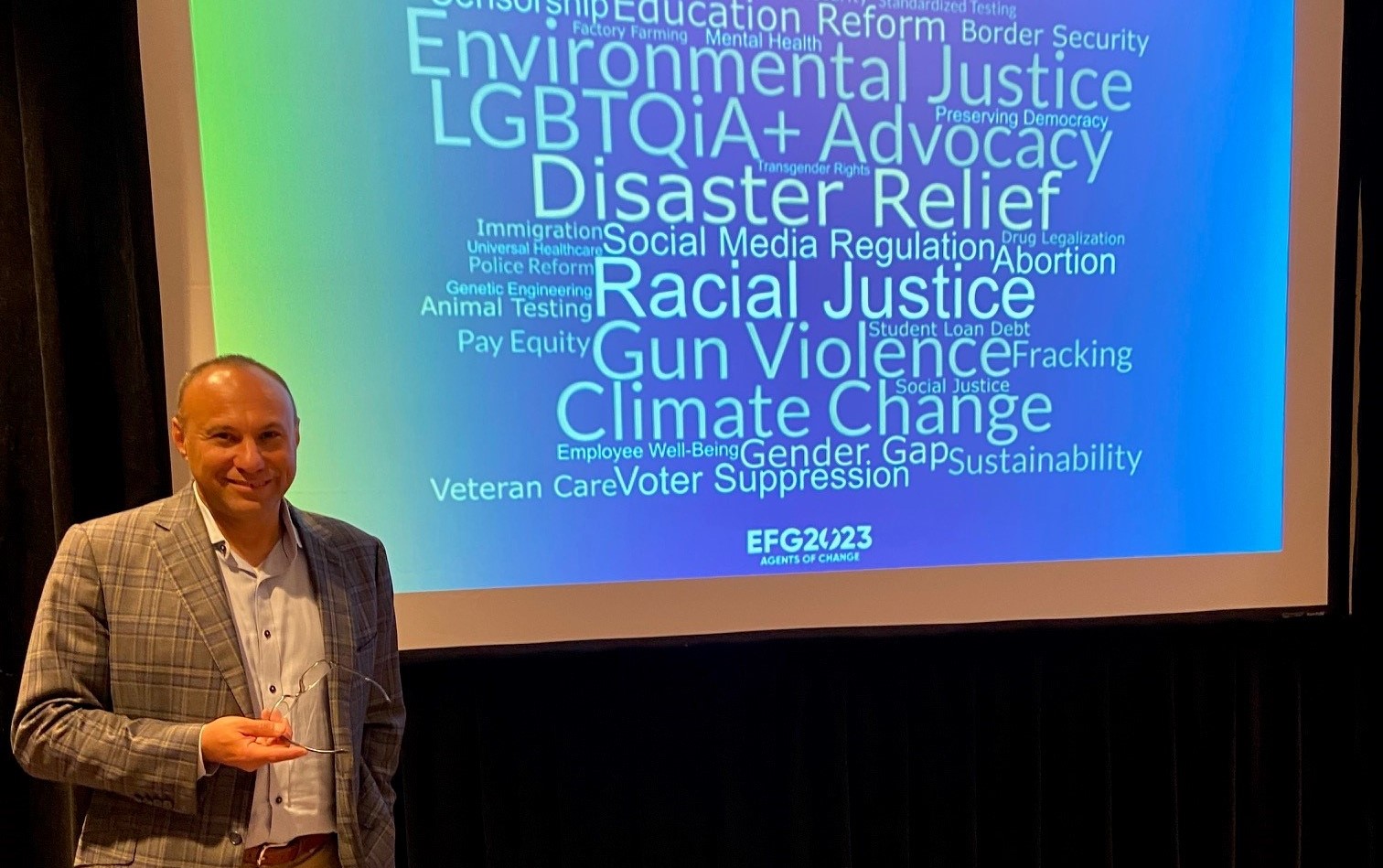
Business leaders must constantly grapple with addressing the wide range of pressing social issues, crises, and controversies that continuously come across their desks. From the horrors of natural disasters, mass shootings, and war, to debates around abortion, LGBTQiA+ rights, artificial intelligence (AI), and global warming; every day corporate social responsibility (CSR) and environmental, social, and governance (ESG) professionals navigate a complex landscape influenced by politics, stakeholder demands, and corporate restructuring. There is much to keep us up at night.
Here are five essential strategies to help formulate effective responses and take purposeful action. I hope they help to inform your work.
1. Create Customized Frameworks to Guide Your Issue Response: Take the time now, during a non-crisis moment, to gather relevant business leaders and prepare for what is inevitably coming your way. Develop and align around decision-making criteria that will inform the scale and type of action required. These criteria should be influenced by corporate purpose and values, closely align with brand and business priorities, and strongly consider stakeholder sentiment. Engineer processes, such as decision trees and risk-category frameworks, to steer robust dialogue and lead to timely, sophisticated, and effective responses.
2. Surround Yourself with Experts: Appreciating that we can’t be authorities on every social and business issue, it benefits everyone to pre-position experts with diverse perspectives who can provide rapid benchmarking, data, and context to inform the decision-making process. Foster internal and external allies to keep you up to date on relevant news and emerging topics and help cut through corporate silos and hierarchies. Be prepared to earn and keep a seat at the table.
3. Know Your Audience Deeply and Understand the Implications of Your Response: By thoroughly understanding and mapping the myriad of internal and external perspectives, it is possible to begin to anticipate the potential reactions of key audiences. As uncomfortable as it may be, it’s often the case that we need to prioritize among audiences. Listen to voices beyond just those present inside the decision-making room; hear from people with lived experience, understanding that those closest to the issue often have the most useful insights. By understanding the importance of an issue among various stakeholder groups, the appropriate level of action can be taken; one size will not fit all circumstances. Consider playing “devil’s advocate” to help teams think through the implications of various scenarios.
4. Connect the Dots to Existing ESG-related Activities: Addressing societal issues is not new for most corporations. However, too often, highly strategic, historic social impact initiatives are overlooked in the rush to craft quick responses. Review the vast array of sophisticated ESG, DE&I, signature social impact activities already in your arsenal and help stakeholders connect the dots to the issue at hand. This will demonstrate a “continuation of concern and action,” versus feeling like something completely new.
5. Go Beyond Words; Respond with Action: It’s not sufficient to rely on public statements or one-off social media posts as a complete response to pressing issues. In most instances, stakeholders expect companies to take action or policy change commensurate with the circumstances. These actions must demonstrate genuine engagement, meaningful dialogue, and sustained effort, while driving impact. Ensure transparency and accountability; and make sure that actions are measurable, trackable, and communicated effectively. And to maintain credibility, if you make a pledge or promise, it is essential to follow through and deliver. Expect decisions and announcements to be scrutinized and questioned both today and in the future.
Thoughtful consideration and decisive action are required to navigate the sea of emerging social issues on the horizon. This has given social impact professionals new opportunities to help shape corporate policies and actions. Adopting these five approaches quickly summarized above will increase your positioning as a trusted thought leader able to guide decisions, communicate effectively, and deliver meaningful business and social impact.
